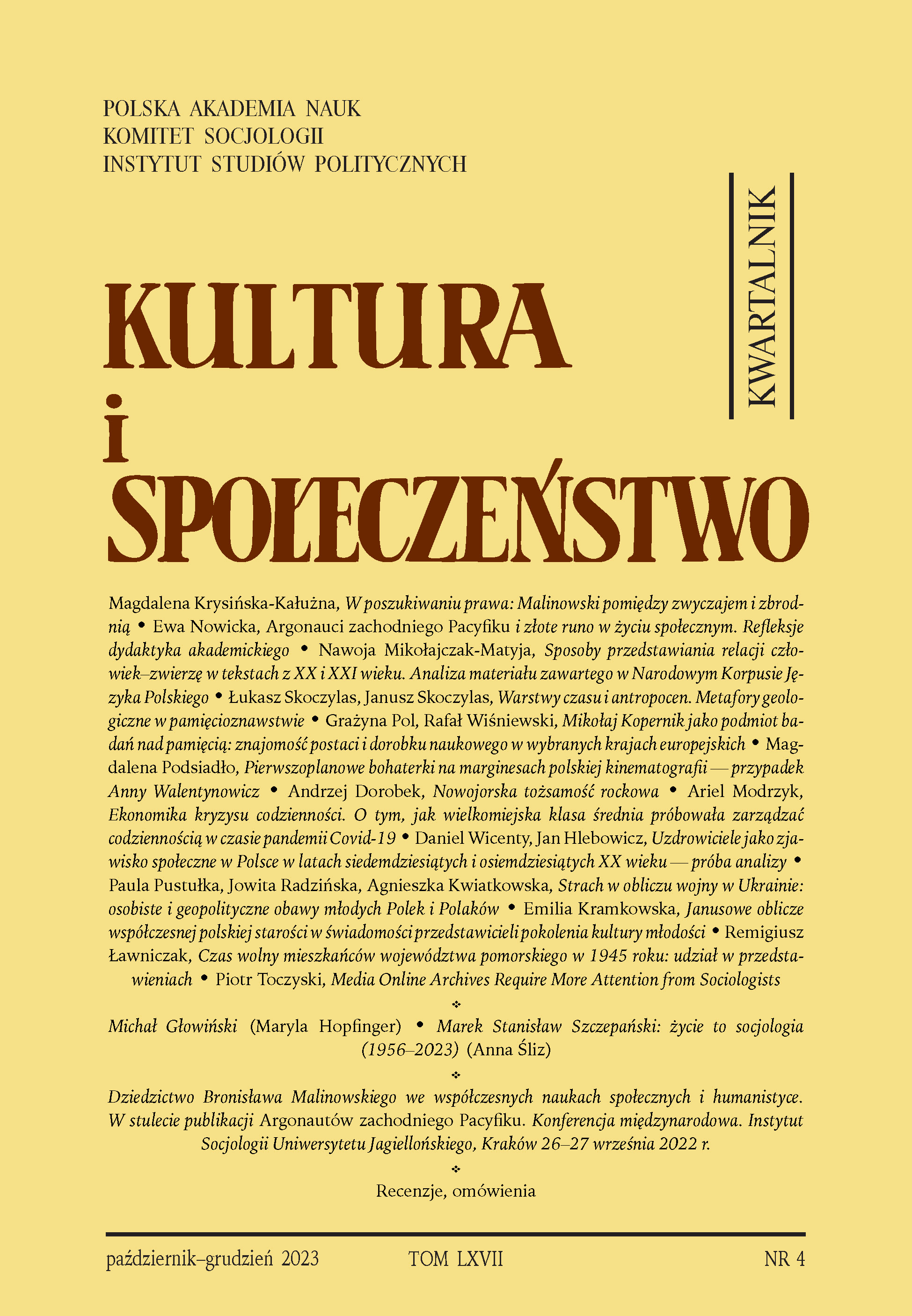SPOSOBY PRZEDSTAWIANIA RELACJI CZŁOWIEK–ZWIERZĘ W TEKSTACH Z XX I XXI WIEKU
ANALIZA MATERIAŁU
ZAWARTEGO W NARODOWYM KORPUSIE JĘZYKA POLSKIEGO
METHODS OF PRESENTING HUMAN-ANIMAL RELATIONSHIPS
IN TEXTS FROM THE 20th AND 21st CENTURIES.
ANALYSIS OF MATERIALS FROM THE NATIONAL CORPUS OF POLISH
Author(s): Nawoja Mikołajczak-MatyjaSubject(s): History and theory of sociology, Sociology of Culture, Environmental interactions
Published by: Instytut Studiów Politycznych PAN
Keywords: humans; anthrozoology; semantic opposition; linguistic corpora; National Corpus of Polish;
Summary/Abstract: The aim of the article is to reveal how the human-animal relationship is reflected in real linguistic utterances made in Polish. 2,813 sentences from the National Corpus of Polish, in which the words człowiek / ludzie (person / people) and zwierzę (animal) co-occur, were analysed. On the basis of direct contexts, a dozen groups of sentences were distinguished, reflecting different ways of perceiving the relationship in question: from equating the two, through varying degrees of indicating the similarities and differences between humans and animals, to a clear emphasis on distinction between them. It was found that speakers most often indicate humans and animals as playing different roles — performers vs. recipients — in various activities and experiences. Speakers also often emphasise the strong similarities between humans and animals, particularly often referring jointly to both human and animal in their utterances, but as separate objects.Sentences equating humans with animals account for only about 8% of the analysed set.
Journal: Kultura i Społeczeństwo
- Issue Year: 67/2023
- Issue No: 4
- Page Range: 35-55
- Page Count: 21
- Language: Polish

